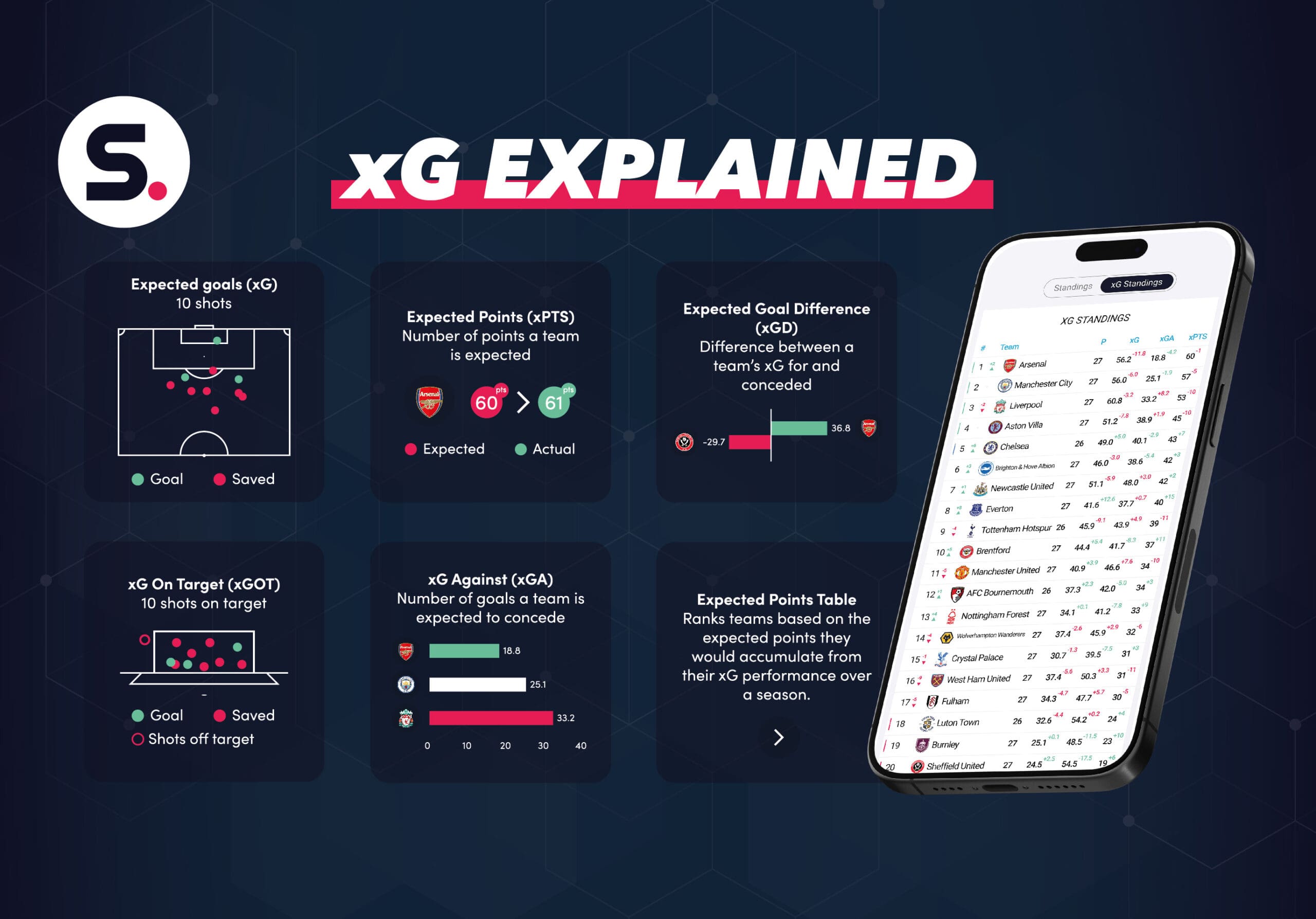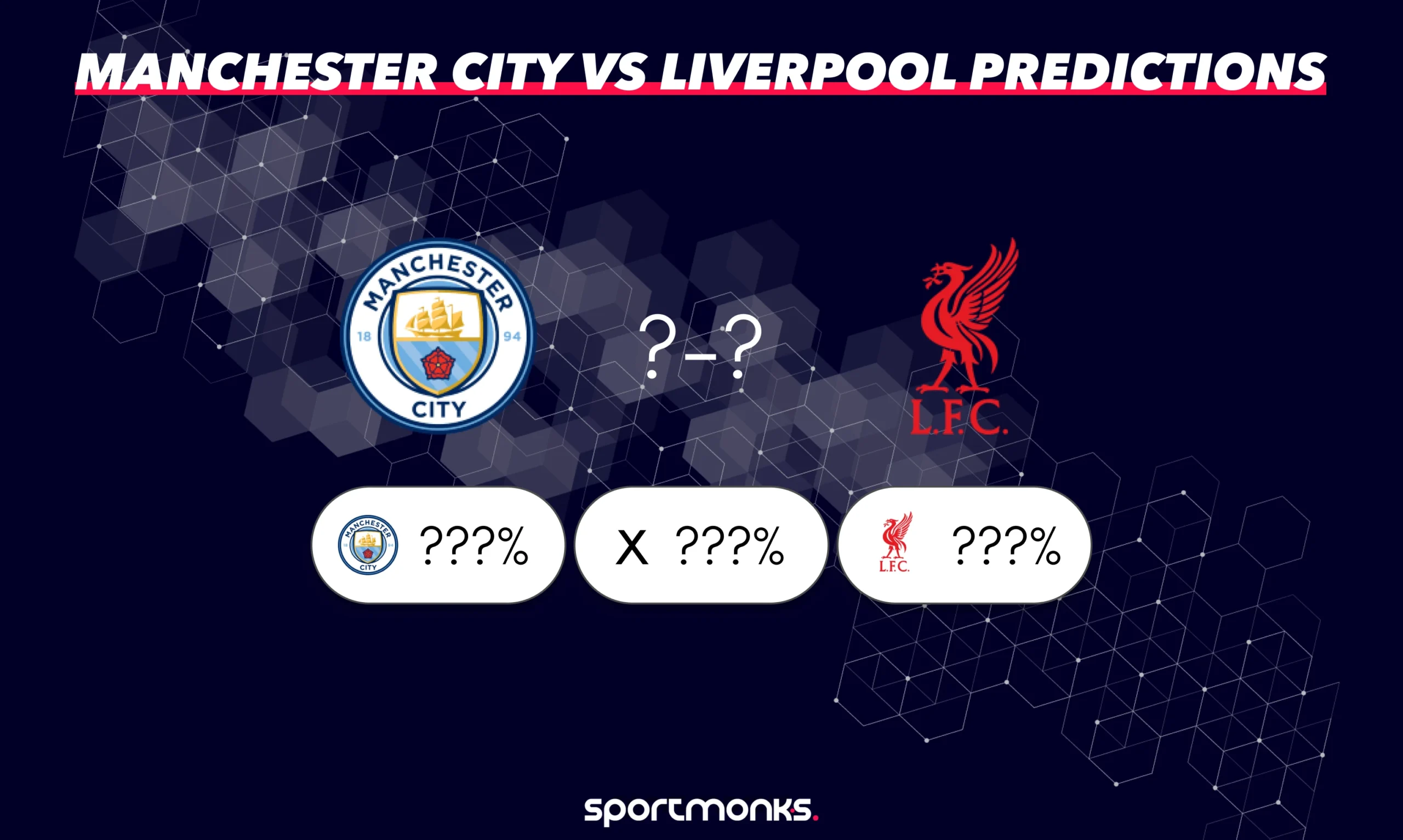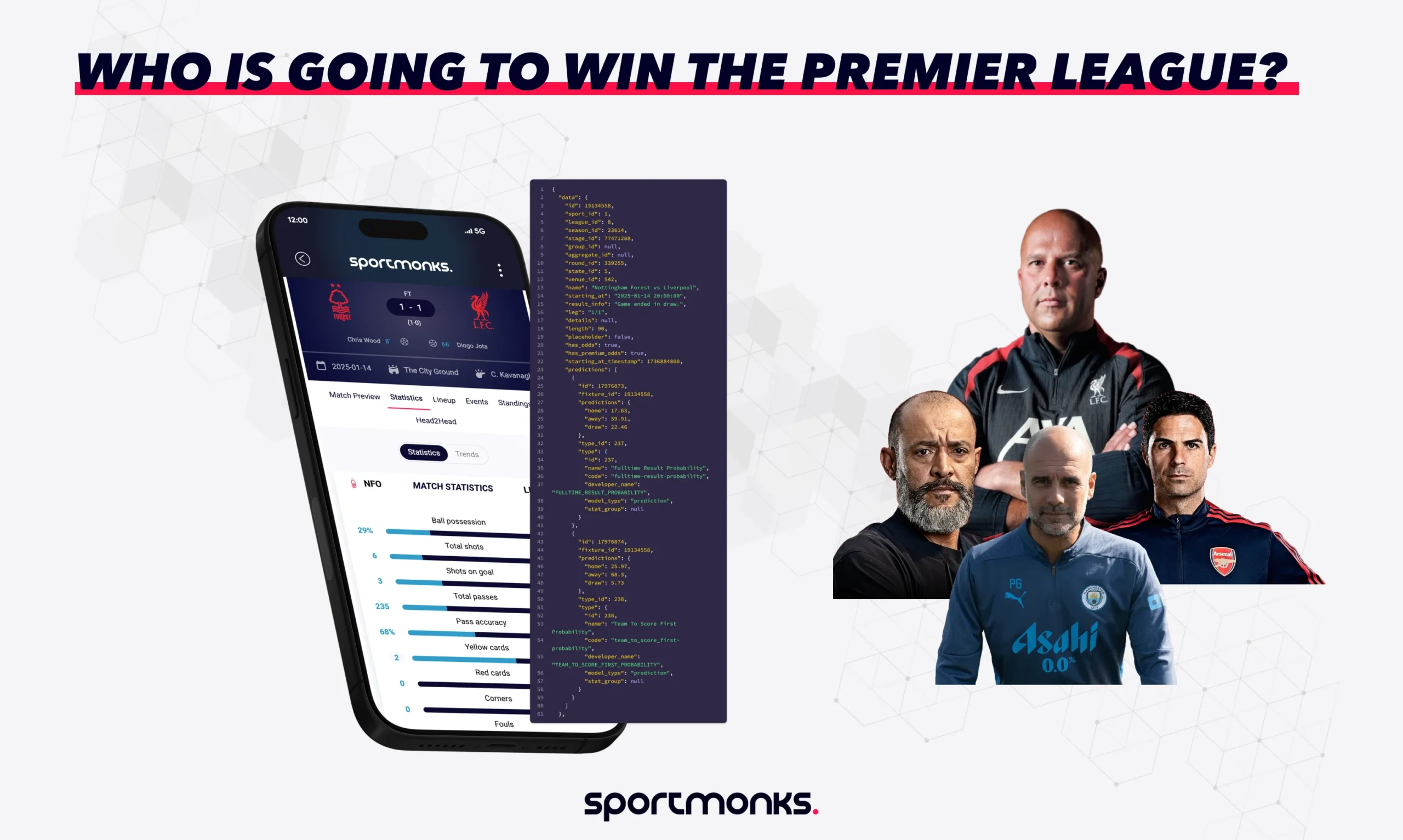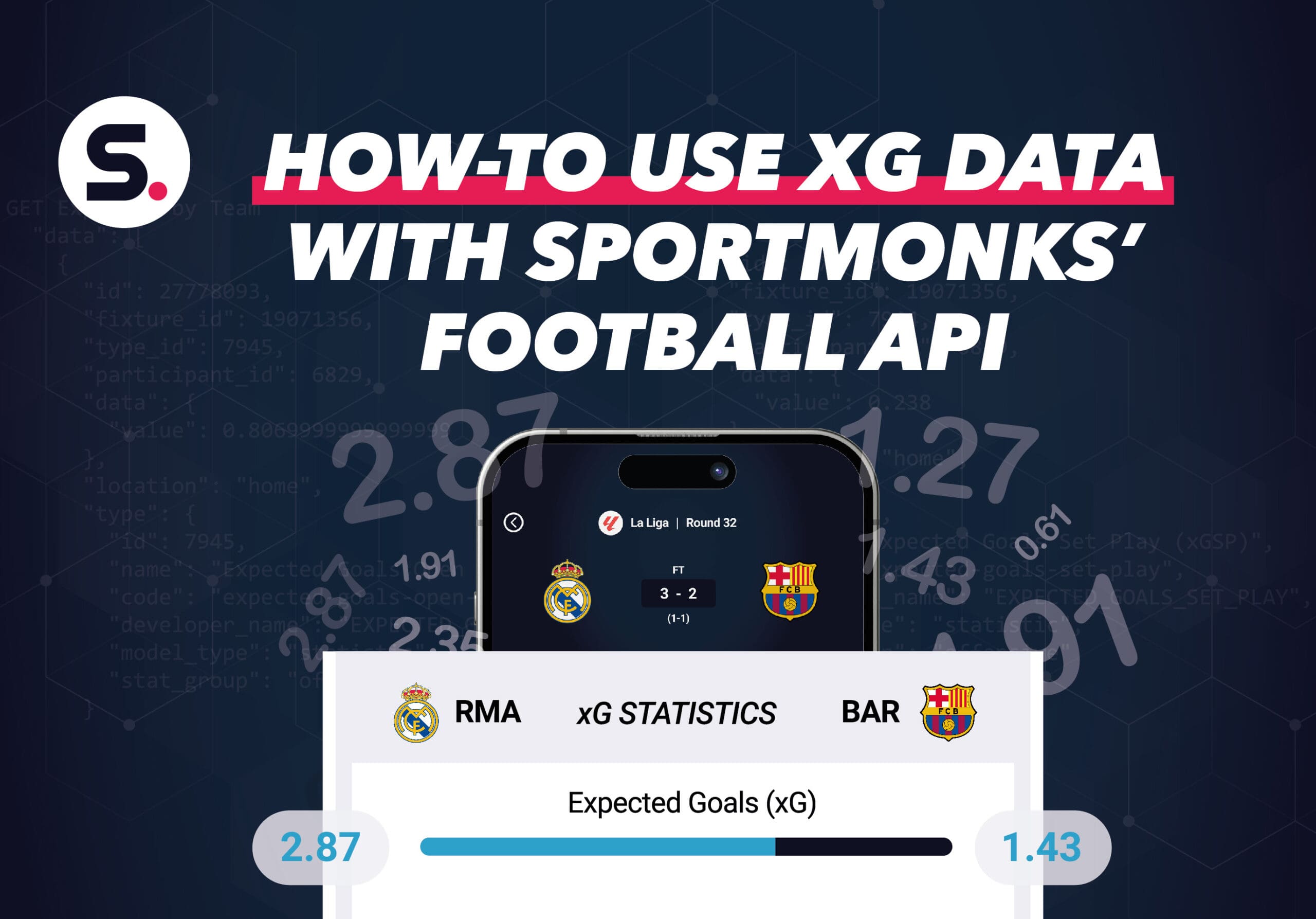
Contents
What xG-metrics does Sportmonks offer?
Sportmonks offers the following xG metrics:

Meaning of the various xG-metrics
xG is the first metric. We have a complete blog dedicated to explaining what xG is. We will explain it here briefly as a reminder.
Expected goals (xG)
In football, xG is a statistical metric quantifying the quality of goal-scoring chances created or conceded during a match. It measures the probability that a particular goal-scoring opportunity will result in a goal based on various factors such as the location of the shot, the angle, the distance from the goal, the type of pass that led to the chance, and other situational variables.
xG on target (xGOT)
xG On Target measures the probability of an on-target shot achieving a goal. Shots ending up in the corners are more likely to result in a goal than shots through the middle of the goal (of course, depending on the location of the goalkeeper, if you shoot in the left corner, while the keeper is there, you might be less successful than when you decide to shoot it in an empty right corner or the middle). The value zero represents a shot on target that is expected to be never scored, while an xGOT value of 1 is expected to be scored 100% of the times. Keep in mind that xGOT is a post-shot model, while xG is a pre-shot model.

Now, let’s take a look at Haaland’s shot for an (almost) empty goal. As you can expect, this has an xG value above the big chance range (an xG of 0.38 or above). The xG value is as high as 0.75. However, the xGOT is non-existent, as Haaland couldn’t shoot the ball on target.

What is the difference between xG and xGOT?
Rashford’s shot resulted in a 0.03 xG. However, the post-shot model (xGOT) is higher due to its great speed and position in the corner. The xGOT for Rashford’s shot is 0.23. In this case the SP would be 0,21 (xGOT minus xG).

Other xG values
Non-penalty xG (npxG)
Non-penalty xG calculates the xG while penalties are excluded. It offers a clearer picture of a team or player’s expected goals from open-play situations. This helps evaluate the team’s ability to create scoring chances in open-play situations. Remember that other set-play situations like corners and free kicks are still included.
xG open play (xGOP)
xG Open Play calculates the xG while excluding all xG created through set pieces. It helps to evaluate a team’s ability to create scoring chances during the run of play, highlighting their attacking prowess in open-field situations.
xG set play (xGSP)
xG Set Play measures the expected goals from set-piece situations like corners, free kicks, and penalties. This is in contradiction to xG Open Play. The xG Set Play metric assesses a team’s effectiveness in capitalising on opportunities created from dead-ball situations, which can be crucial in breaking down organised defences. The following xG metrics are all part of xG Set Play.
xG corners
xG Corners focuses specifically on the expected goals from corner kicks. It evaluates the quality of delivery and finishing from corner situations, providing insights into a team’s set-piece strategy and proficiency in converting corner opportunities into goals.
xG free kick
xG Free kick calculates the expected goals from direct free kicks. It assesses a player or team’s ability to convert scoring chances from set-piece situations outside the penalty area, considering factors such as distance and angle.
xG penalty
xG Penalty measures the expected goals from penalty kicks. It evaluates the likelihood of a penalty being converted into a goal. Each penalty is worth .79 xG.
Shooting performance (SP)
Shooting Performance measures how well a team or player shoots. It compares the xGOT to the expected goals (xG). When a team/player’s xGOT surpasses its xG, it signifies its proficiency in taking higher-quality shots relative to the quality of the team’s or player’s chances. Take a look at the Rashford example above. The xGOT (0,23) surpasses the xG (0,02), so the shooting performance is quite positive (+0.21). He outperformed his xG which leads to a positive shooting performance number.
However, if you have a clear chance (let’s say 1 v 1 on the goalkeeper with an xG of 0.71) and have a terrible shot so the xGOT is way lower (let’s say 0.21). The player has a -0.50 shooting performance. The example might be a bit extreme versus real life cases. But this is how you should see it.
Expected goals prevented (xGP)
Expected Goals Prevented is used to assess a goalkeeper’s performance in preventing goals based on the quality of shots faced. It measures how many goals a goalkeeper prevents compared to what would be expected based on the quality of chances conceded.
Expected points (xPTS)
Expected Points estimates the number of points a team is expected to earn from a match based on their xG for and against. It provides a quantitative assessment of a team’s performance in a match, helping to gauge whether they deserved more or fewer points based on their underlying performance during the season.
Expected points table
The Expected Points Table ranks teams based on the expected points they would accumulate from their xG performances over a season. It offers an alternative perspective on league standings, accounting for the quality of chances created and conceded by each team.
xG against (xGA)
xG Against calculates the expected number of goals a team is expected to concede based on the quality of scoring opportunities their opponents create. xGA provides valuable insights into a team’s defensive performance. By comparing xGA to actual goals conceded, teams can evaluate the effectiveness of their defensive strategies and goalkeeper performance.
Expected goal difference (xGD)
Expected Goal Difference calculates the difference between a team’s xG for and conceded. It offers insights into the balance between a team’s attacking and defensive performances, indicating whether they are overperforming or underperforming relative to their xG metrics.

FAQ
Expected goals is usually expressed as a value between 0 and 1, where 0 indicates a very low probability of scoring and 1 indicates a very high probability. For example, a clear one-on-one chance with the goalkeeper might have a high xG value close to 1, while a long-range speculative shot might have a low xG value closer to 0. An xG value above 0.38 for a specific shot is considered a big chance. For example, a penalty has an average xG of 0.79 to be scored.
Keep in mind that the quality of a player is not accounted for. So, for expected goals, it does not matter if Lionel Messi is the one taking a shot or if the data scientist of Sportmonks takes the shot.






![Football APIs: How to select the right football data provider [2025]](https://www.sportmonks.com/wp-content/uploads/2020/11/BLOG-How-to-select-the-right-football-data-provider-2025-2-scaled.webp)